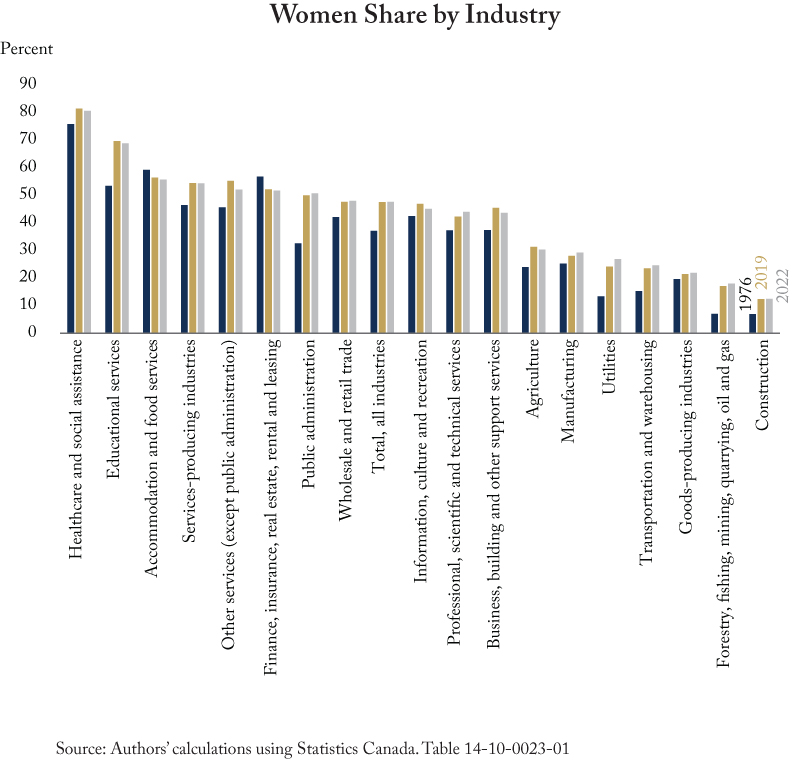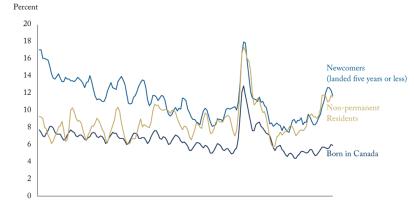Greater labour force participation and better employment outcomes among women can help address some of the challenges posed by an aging population and have a positive impact on economic growth, productivity, gender equality and poverty reduction. Canada could add $150 billion to its annual GDP by boosting women’s overall workforce participation ($63.3 billion), encouraging their employment in high-productivity sectors such as oil, mining and technology ($63.3 billion) and increasing their hours of work ($24.1 billion), according to one McKinsey study.
Authors Parisa Mahboubi and Tingting Zhang outline gender differences in job characteristics depending on employment type, occupation and industry in their new C.D. Howe Institute E-Brief. For example, women are overrepresented in part-time employment and underrepresented in some in-demand jobs, such as skilled trades, and in high-paying occupations like science, technology, engineering and mathematics (STEM), as well as in management occupations.
This chart shows gender imbalances across industries in 1976, in pre-pandemic from 2019, and in 2022. Women are overrepresented in healthcare and education services, followed by the accommodation and food services industry (the lowest-paying industry) and are underrepresented in some in-demand jobs such as skilled trades and in high-paying occupations such as STEM as well as in management occupations.
Some gender differences in occupations are related to educational and occupational choices and workplace culture, as well as societal norms. Although women in Canada have become more educated, they continue to have fewer trades’ certificates and STEM university degrees than men. Industrial differences between men and women explain why, unlike in the 2008-2009 financial crisis, the pandemic hit women harder. During the 2008-2009 financial crisis, the goods-producing industries had the highest employment drop, but only about 11 percent of women worked in these industries, compared to 35 percent of men. In contrast, a higher proportion of women (29.3 percent compared to 24.6 percent of men) worked in the pandemic’s hardest-hit industries: accommodation and food services, wholesale and retail trade, and information, culture and recreation.





